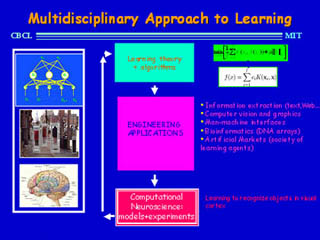
Designing and building a system that will function the same way as a human visual system, but without getting bored, and with a greater degree of accuracy. (Image courtesy of Poggio Laboratory, MIT Department of Brain and Cognitive Sciences.)
Instructor(s)
Prof. Tomaso Poggio
MIT Course Number
9.520
As Taught In
Spring 2006
Level
Graduate
Course Description
Course Features
Course Description
This course is for upper-level graduate students who are planning careers in computational neuroscience. This course focuses on the problem of supervised learning from the perspective of modern statistical learning theory starting with the theory of multivariate function approximation from sparse data. It develops basic tools such as Regularization including Support Vector Machines for regression and classification. It derives generalization bounds using both stability and VC theory. It also discusses topics such as boosting and feature selection and examines applications in several areas: Computer Vision, Computer Graphics, Text Classification, and Bioinformatics. The final projects, hands-on applications, and exercises are designed to illustrate the rapidly increasing practical uses of the techniques described throughout the course.
Other Versions
Other OCW Versions
OCW has published multiple versions of this subject. ![]()


